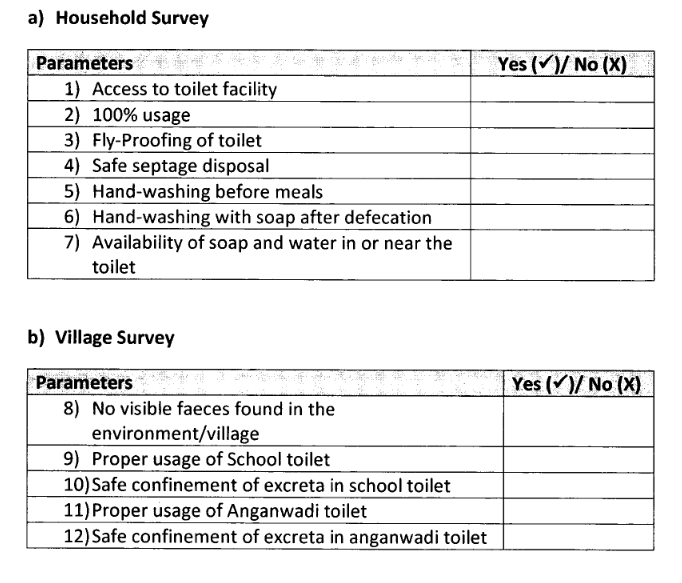On December 30, 2018, the Bruhat Bengaluru Mahanagara Palike (BBMP) issued a public notice declaring all 198 BBMP wards ‘open defecation free’. It was approved by the BBMP council on December 27, 2018, three days prior to the distribution of the notice. This is a required criterion under Swacch Bharath Mission to be considered for higher ranking in Swacch Sarvekshan Survey 2019 which will begin soon.

What is Open Defecation-free area?
According to the definition given by Union Ministry of Drinking Water and Sanitation in 2015, “ODF is the termination of faecal-oral transmission, defined by a) no visible faeces found in the environment/village; and b) every household as well as public/community institutions using safe technology option for disposal of faeces.”
What is safe technology? The document says that safe technology means “no contamination of surface soil, ground water or surface water; excreta inaccessible to flies or animals; no handling of fresh excreta; and freedom from odour and unsightly condition.”

A check list from the guidelines for ODE verification. (Source: swachhbharatmission.gov.in)
There are checklists described to declare a city/village/Gram Panchayat open defecation free, according to a document released by the Ministry of Drinking Water and Sanitation. Animal excreta and open human urination do not fall under ODF yet.
“There are criteria for to declare wards open defecation free,” said Sarfaraz Khan, Joint Commissioner, Health and Solid Waste Management, BBMP. “Only where it is 75-80% free of open defecation can it be declared ODF. If it is 100% free, then it is declared ODF+++. If people say their area is not open-defecation free, we will withdraw the ODF tag,” he clarified.

ODF, ODF+ and ODF++ cities concept (Source: PAS Project, CEPT University, Ahmedabad)
While all the zones have been tagged ODF, the reality of the situation is different. In Kasavanahalli alone, early mornings and late nights witness plenty of people still using the surrounding shrubbery to defecate in the open.

Two labourers entering shrubbery with water containers, in Kasavanahalli. Pic: Rahna Jacob
There are almost no public toilets in the area that the floating population of construction workers and labourers can use. What toilets there are, tend to be dirty and ill-maintained, discouraging anyone from using them. This is the story of most newly added areas to BBMP where public infrastructure has not expanded yet.

Open defecation is prevalent in Kasavanahalli area due to lack of access to clean toilets. Pic: Rana Jacob
The BBMP has invited opinions and objections in writing from the public, which can be submitted to jcswmbbmp2@gmail.com, or sent to the Joint Commissioner (Solid Waste Management), 2nd floor, Annexe Building-02, Central Office, N.R. Square, Bengaluru-560002, up to 14th January.
Note: Jude Weston, an intern with Citizen Matters, contributed to this story.

We never understand why government should allow residential registration when they want to continue KCDC.
This is irresponsibility of government and thinking as a commercial selfish instead of public wellness and welfare.
I refer to your article on ODF Bengaluru. To me open urination also comes under ODF. I have to confess that I have violated the established rules of discipline.
Reasons: Once I was returning from my Farm (Around 65 km from Bengaluru) and because of heavy traffic holdup, it took more than 3 hours to reach my home. It was even very difficult to park my vehicle; but still managed to park near a Post office and used the drain as my urinal!
Second was when the entire Whitefield area was blocked for a party meet. Neither we could forward or return. Believe me, we were stuck on the road for more than four hours. Luckily I could take a U turn and return home after two hours ….
only to rush to the Urinal in my home even without switching off my vehicle.